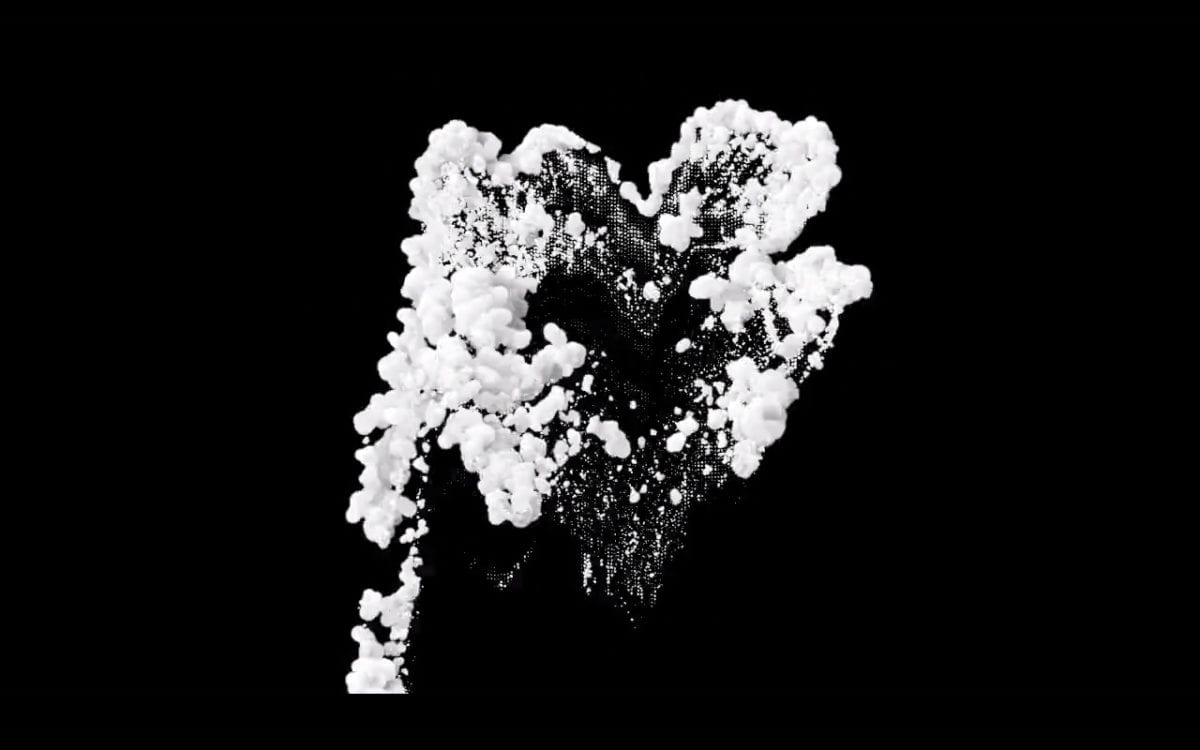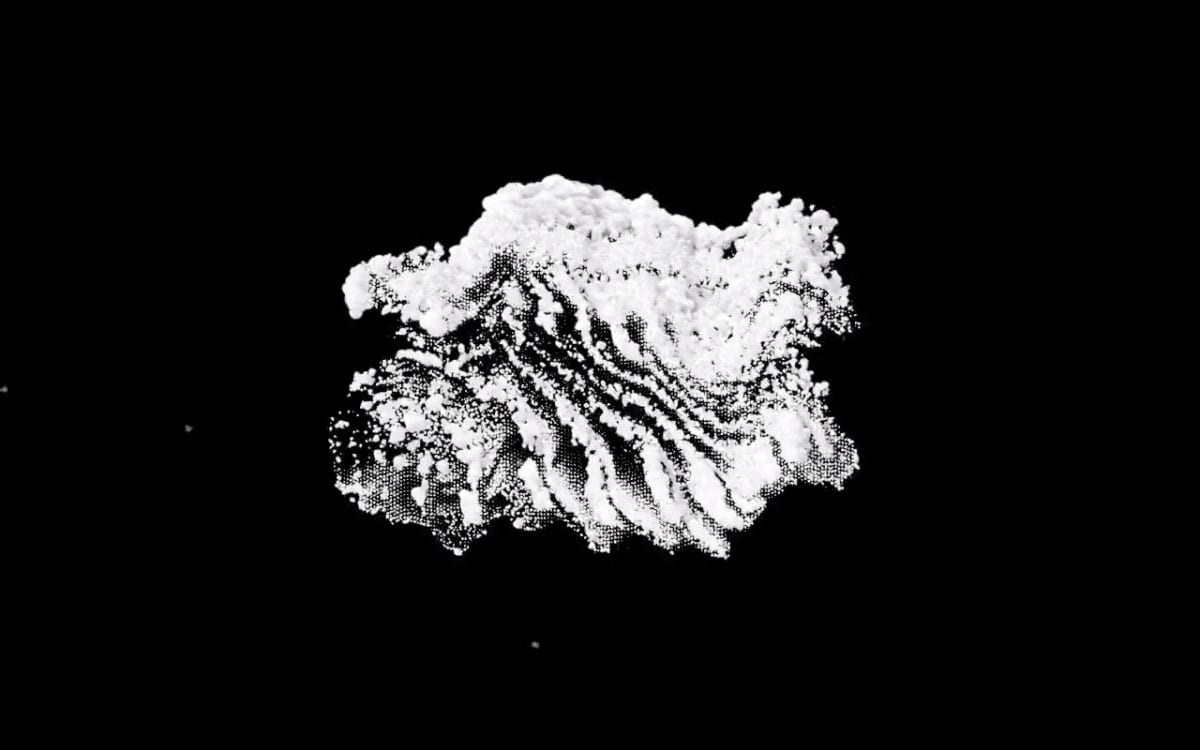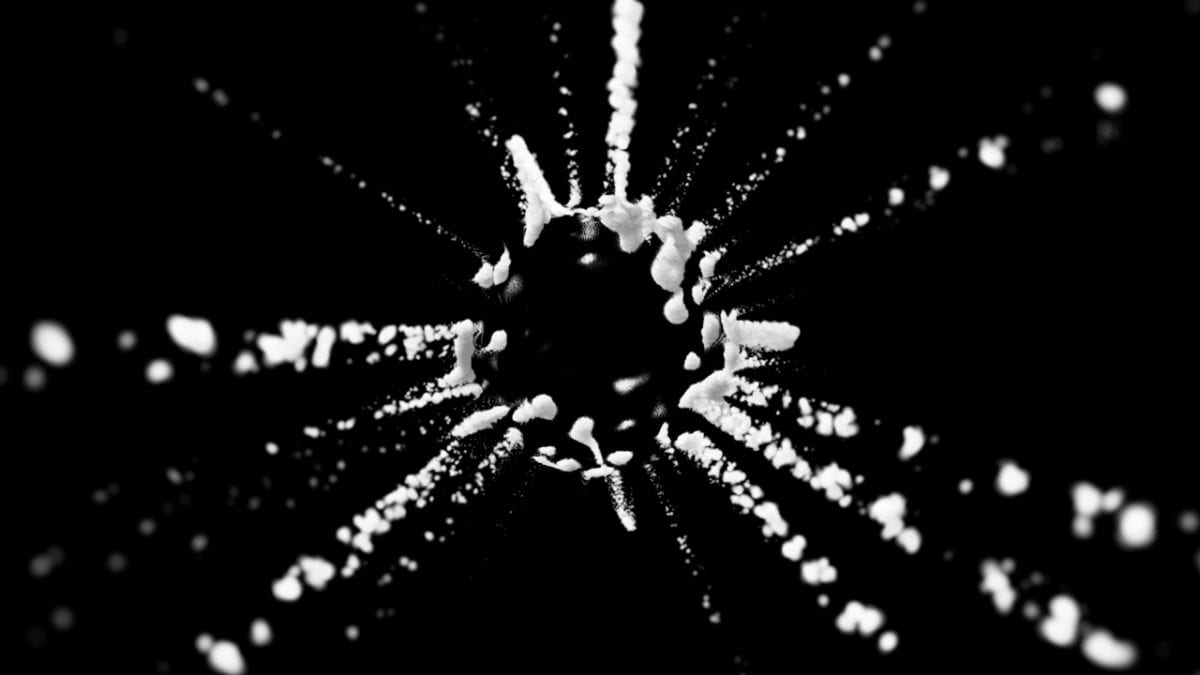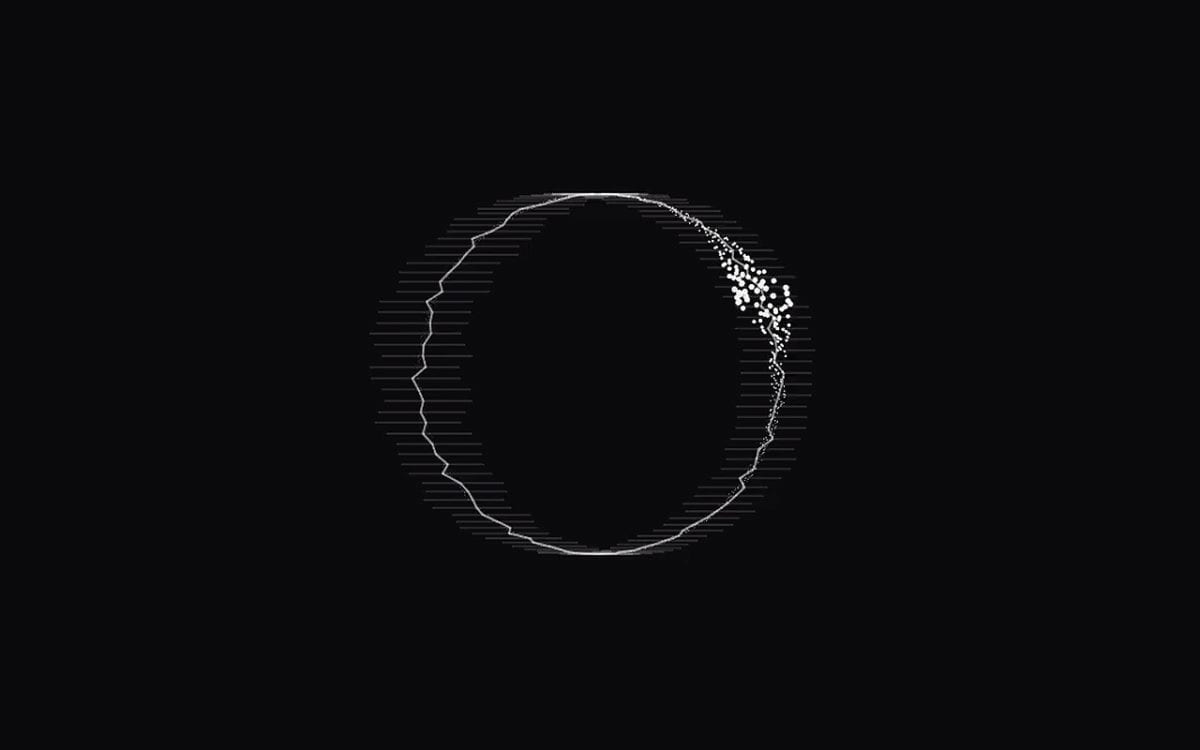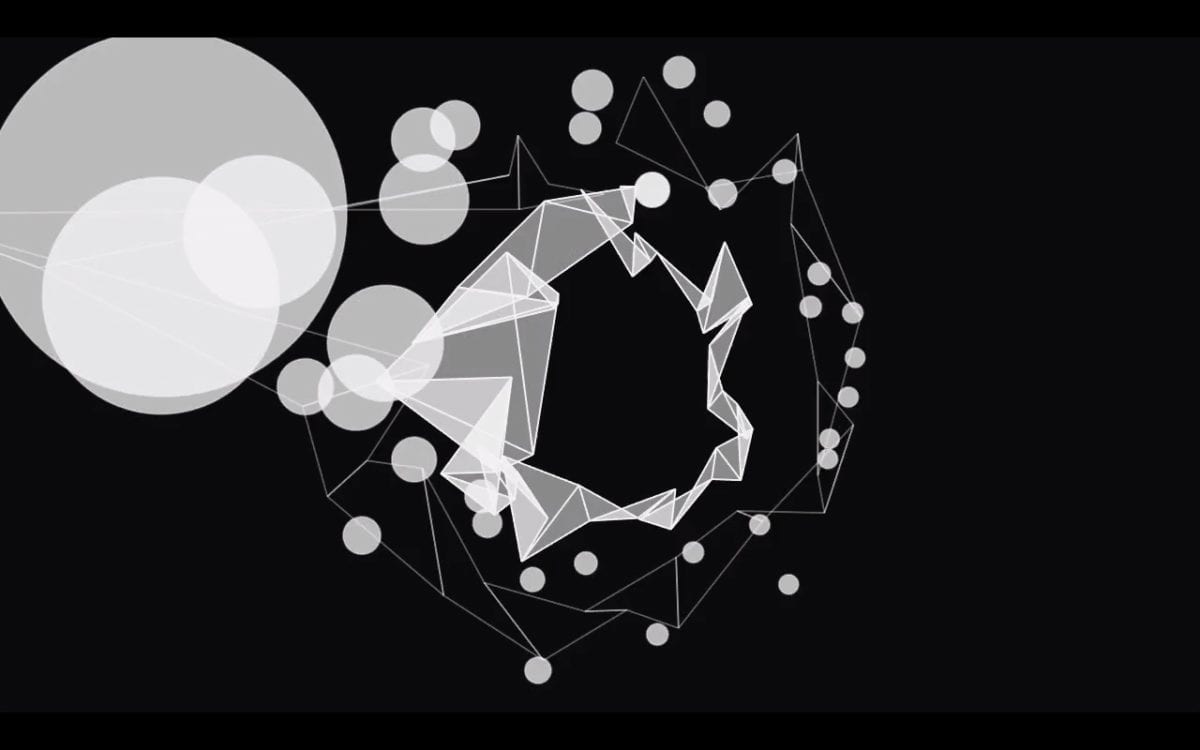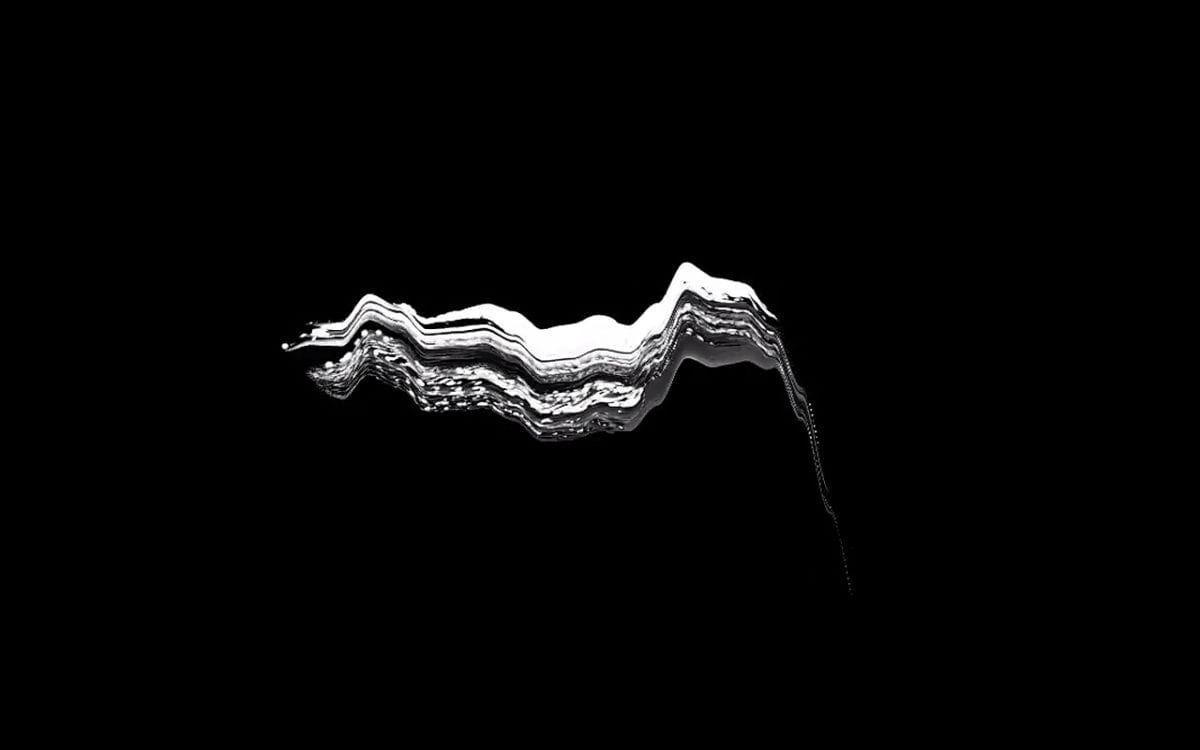Joëlle Snaith is a self developed visual artist whose work is focused on audio visualisations and the connection between sound and form. She started exploring moving image in 2008, and produced a number of audio reactive animation projects that formed the basis of her aesthetic. Her interest in creative coding and generative graphics led to explorations using the open source programming language Processing, and more recently the visual programming language Quartz Composer to create real-time live visuals. Using generative graphics and procedural animation, she designs elegant and emotive moving images with primary focus on detail.
The structure and organisation of code resonates with her character and aesthetic, but the generative nature of the process often reveals unexpected results, Joëlle finds this element of the process insightful as she learns to embrace the unforeseen and the unplanned. Her work reflects a minimalist approach that generally rejects colour – sometimes organic, sometimes geometric, often abstract and always a visual translation of emotion and environment.
Having spent the last 10+ years designing interfaces for digital media and clients including Adidas and Glade Festival, as well as Superbalist and Visi Magazine in South Africa, Joëlle has now been commissioned to design a live audio-visual show for Killawatt. We decided to catch up with her to find out more about her past in graphics and how she has honed her skills over the years.
Hi Joelle, completely love the aesthetic and new showreel for 2015. Can you explain how you would even go about producing such depth and clarity in your videos?
Thank you! It all starts with the music. With each of my videos, I had heard a track that resonated deeply with me, and I just needed to make a visual to it. It often starts without too much planning.
I like to allow for a good amount of experimentation especially in the beginning, and not be constrained. Perhaps because I am often working within a number of constraints when I’m designing interfaces. It’s kind of hard to explain to be honest but it’s definitely informed by the music.
I recently designed a live visuals pack for Serato video, where I designed the visuals first and then had to pick a track for the promo video, worst weekend ever. It has to work the other way round for me. I want to draw myself into the track and not distract too much from it, enhance the sound with a visual, so that’s the starting point.
What skills and experience have you had to gain in order to achieve your aesthetic?
I think that working at various agencies as an interactive designer gave me a good grounding in basic design principles. I always had different taste to a lot of the visuals I would see at parties, which often felt so over the top and too colourful and noisy. I think that constantly crafting and polishing the details in the interfaces I was designing taught me the importance of refining a design, and also encouraged a “less is more” mentality.
It’s all about communication at the end of the day, communicating a message or a feeling. Working with HTML and learning how to program in Flash using Actionscript 2 early on in my career was also very helpful later on when I started learning Processing and Quartz Composer, as I had a basic understanding of programming languages, how code is structured etc.
In terms of developing my aesthetic I think a game changer for me was when I discovered Trapcode Form, a plugin for After Effects, that has built in audio reactors that you can set to different frequencies and then apply to affect various parameters of a particle grid. Not having to keyframe animations to each beat and working in a more procedural way definitely was a defining moment, and the nature of working with particles and fractal fields lends itself to quite a minimal, organic look that can be enhanced with camera animations and depth of field.
There’s the usual tools like Photoshop and Illustrator and there have been phases where I dabbled a bit with Cinema 4D. Back in Cape Town I created visuals for my boyfriends monthly drum n bass event for a number of years, this was a nice playground for me, and the first videos I designed were for him and his producing partner for three of their releases.
But a lot of the work was done late into the night and on weekends, learning tools or trying to create something that balanced out the mind numbing work I was doing for advertising agencies, where the aim was purely to sell people stuff.
It takes quite a lot of patience and persistence, with a good sprinkling of frustration to get something to a point where I’m happy with it. You get past the growing pains of learning the tool, and then you are free to play around a bit more. That is when you can start applying concepts to your work, because you have an understanding of the capabilities.
I think always keeping busy working on side projects and learning is important, often things happened by accident or unexpectedly and that is sometimes where the magic happens.
Also, in terms of creative coding, the Processing A Programming Handbook for Visual Designers and Artists was a turning point for me and gave me the courage to tackle designing with code. The idea of iterating quickly and being spontaneous, writing a couple of lines of code, linking some parameters and letting the audio frequencies drive the animation was an exciting process to discover. What I’m loving at the moment is using the visual programming language Quartz Composer, I find working with nodes more intuitive than looking at many lines of code.
From the start did you envision a career in graphics? Was there a determining moment for you?
I think so, I had studied art at school and immediately after I studied multimedia design for a year. I wasn’t accepted into a graphic design course at Cape Technikon, which was a blessing in disguise, and there were these “multimedia design” courses that sounded interesting.
Combining design with animation and sound and building something that you could put online was a crazy concept to me at the time. I don’t think I really got what digital was but I do remember my first encounters with Flash, which was my intro into moving graphics. It was a great era for Flash, there were guys like Joshua Davis and GMUNK as well as studios like 2Advanced that pushed it to the next level.
I don’t know if there was a determining moment, I remember I wanted to make stuff on a computer that moved and I didn’t want to be broke!
What’s your set-up like? Could you walk us through the hardware, software and your ideal place to work?
My setup is simply a Macbook Pro and a Wacom Intuos Tablet. Software I’m using at the moment is Quartz Composer, After Effects with Trapcode Form, Soundkeys and Mir. 2V-P for playing the content. Google docs!
My ideal place to work is at my desk at home early on a Saturday or Sunday morning when everyone is still sleeping. I don’t like working in busy environments.
Who or what do you draw inspiration from?
I draw a lot of inspiration from music. It changes according to my state of mind and mood, but over the years I’ve always listened to a lot of drum n bass towards the harder and darker sub genres, various styles of techno, Nine Inch Nails, Autechre & Aphex Twin. Richie Hawtin’s D9 Transitions was on repeat for about a year. It’s always changing but music has supported me emotionally.
Also the natural world, particularly mutations and parasites. I also love Pinterest as it’s a great place to discover new stuff that you wouldn’t normally come across. Kazimir Malevich, Carsten Nicolai, Ryoichi Kurokawa and Bart Hess’s Mutants have also influenced my work.
I’ve always admired the work of Joshua Davis, GMUNK and Universal Everything as they were always pushing boundaries and doing things I’d not seen before. Ali Demirel’s work with Richie Hawtin, especially the first Plastikman live show was very influential to me. I always found Ali’s minimal aesthetic and slowly developing visuals quite mesmerising. Nine Inch Nails’ show at the O2 in 2014 was incredible; the way they played with perspective and dimensions of the space with transparent screens was jaw dropping.
I often “go dark” when I’m designing though, after the initial phase of exploration I like to close browsers, leave my phone in another room and just work in an isolated way.
What do you have on the walls of your bedroom?
Nothing! It might sound odd and perhaps this is a result of moving to London from Cape Town with a single suitcase, but I have been purging my space regularly of “stuff” over the last 2 years. I’ve been finding clutter and things on walls quite claustrophobic and distracting. I’m a bit obsessive compulsive and a control freak when it comes to my environment and the latest manifestation of this is clean and bare walls.
Though I do have a single postcard on my fridge from The Cutest Sneeze in the World Cat Postcards.
What would be your dream installation or performance?
There are many but designing & performing visuals for Nine Inch Nails, Massive Attack, Autechre, Aphex Twin or Plastikman would be a dream.
You’ve recently signed with the Derelicht agency, how did this come about?
A mate of mine sent Gavin some of my work and he got in touch. I went up to Suffolk to meet with him, not really knowing what to expect as the concept of a visual label was new to me. To have someone see something in your work and support you is amazing and I’m really excited for 2015.
How do you hope to develop your career in the near future?
I’d like to focus more on live performance, working closely with producers to develop visuals to support their music. I’d like to become more knowledgeable technically, and work with lighting artists and stage designers to gain a better understanding of how all the aspects fit together to make those unforgettable shows. I also want to build more focus around a live audio reactive visual set, where the visuals are synced to the music.
Could you talk us through your Adidas and Glade Festival projects?
I led the design on the Glade Festival Website in 2009 while working at a small agency in Cape Town. The agency was tasked with launching a digital campaign to ensure ticket sales and we developed a microsite that featured an interactive map controlled by a timeline spanning the 4 days of the festival. You could create a custom schedule and all the content could be updated by the client via a CMS. It was well-received and won some awards locally.
At the end of 2013 / beginning of 2014 I did a 2 month stint in Berlin, working at Acne Productions on a couple of their Adidas accounts. I was there on a contract basis while they were looking to hire a new Design Director. Adidas is a very forward thinking brand and Acne had developed a number of campaigns to support their various fashion shows and season launches. I was responsible for maintaining the design to their high standards and working with the various teams based around Europe. I enjoy working with fashion brands, as they are often keen to explore new ideas and ways of engaging their audience.
What are you working on at moment?
An AV show for Killawatt and a messaging app for iOS, Android and WAP that has had over 100 million users in Latin America.
What’s your favourite video on YouTube?
That’s a tricky question! If I had to choose one video it would have to be Nyan Cat.
And worse?
I can’t really pick one, but videos of animals in circuses upset me.
For bookings contact gavin@derelicht.com
